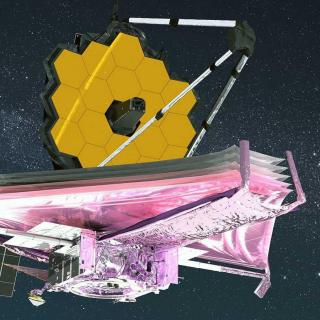
介绍:
For the past few years, NASA has been developing a new advanced space telescope called the James Webb Space Telescope. Most people know about the Hubble Space Telescope, launched in 1990, which has given us plenty of insight about the universe, and images of distant planets, galaxies, and stars. The new Webb Telescope is much bigger than Hubble. Hubble is about the size of a school bus, but Webb is about the size of a tennis court. Hubble’s mirror, used to collect light from distant objects, is 2.4 metres in diameter. But Webb has 18 separate mirrors that will unfold once in orbit, for a total diameter of 6.5 meters. The way in which Webb looks at the universe is also different. While Hubble mainly uses visual light, Webb can see in the longer wavelengths of infrared, giving it higher sensitivity. This will allow Webb to look through dust clouds that might block the light from distant objects. When we observe the stars, light takes time to travel from the star into our eyes. So, when we look at the universe, we are actually seeing the way the universe looked a long time ago. With the Webb telescope, we will be able to see the universe as it was about 100 million to 250 million years after the Big Bang.
大家还在听

